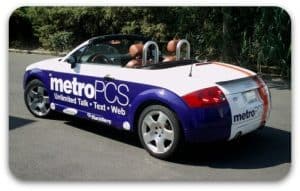In today’s crowded advertising landscape, businesses are constantly seeking innovative ways to capture consumer attention. One such method that has gained significant traction is cartvertising—advertising on shopping carts in grocery stores and retail outlets. But with growing interest, marketing professionals are asking: How effective is cartvertising, and what do cartvertising reviews reveal about its return on investment (ROI)?
In this blog, we’ll explore the effectiveness of cartvertising in niche markets, analyze real-world case studies, and provide insights on how brands can measure their success with this unique advertising method.
Understanding Cartvertising and Its Appeal
Cartvertising places branded advertisements directly on shopping carts, ensuring continuous exposure as shoppers navigate stores. Unlike traditional out-of-home (OOH) advertising, cartvertising offers a hyper-targeted approach by reaching consumers at the point of purchase.
Why Marketers Are Turning to Cartvertising 
1. Targeted Reach: Ads are placed in specific grocery stores or retail chains, allowing businesses to focus on local or niche audiences.
2. Long Dwell Time: Shoppers spend an average of 41 minutes per trip, leading to repeated exposure to cart ads.
3. Cost-Effective Compared to Traditional OOH: Cartvertising typically costs less than billboards or transit ads, providing a higher ROI for smaller businesses.
4. Increased Brand Recall: Shoppers actively engage with their carts, resulting in improved message retention compared to fleeting billboards.
Cartvertising Reviews: What the Data Says
Many brands that have leveraged cartvertising report positive results, but what do cartvertising reviews really reveal? Let’s break down the most commonly discussed aspects by businesses that have implemented this strategy.
Return on Investment (ROI)
Cartvertising reviews indicate that the ROI depends largely on the industry and the nature of the product. Some key insights include:
1. Local Businesses: Restaurants, auto repair shops, and healthcare providers report up to a 30% increase in local inquiries after launching a cartvertising campaign.
2. E-commerce Brands: Businesses offering home delivery services see a surge in app downloads due to QR codes strategically placed on carts.
3. National Brands: CPG (Consumer Packaged Goods) brands find cartvertising useful for reinforcing brand recall and driving in-store promotions.
Consumer Engagement
According to reviews, cartvertising offers a higher engagement rate compared to static ads. Consumers have ample time to engage with the message while shopping, making it an effective strategy for:
1. Educational Campaigns: Health organizations using cart ads to promote wellness initiatives have noted increased participation in preventive healthcare programs.
2. Promotions & Discounts: Grocery chains report higher coupon redemption rates when promotions are advertised via cartvertising.
Brand Visibility and Awareness
Cartvertising ensures continuous visibility throughout the store, and many advertisers report that customers recognize their brand post-campaign. Key performance indicators (KPIs) used to measure visibility include:
1. Number of impressions per day per store
2. Brand recognition surveys post-campaign
3. Social media mentions and interactions linked to the campaign
How to Measure the Success of Your Cartvertising Campaign
To assess the effectiveness of your cartvertising strategy, it’s essential to focus on measurable outcomes. Here’s how marketers can effectively track and analyze performance.
1. Key Performance Indicators (KPIs)
Common KPIs used to evaluate cartvertising success include:
Impressions: The estimated number of views based on store traffic data.
Engagement Metrics: QR code scans, coupon redemptions, and website visits.
Sales Lift: Comparing sales data before and after the campaign.
2. Tools for Tracking
Advertisers can utilize the following tools to monitor the impact of their campaigns:
QR Codes and Landing Pages: Trackable links help measure conversions directly linked to cart ads.
Retail POS Data: Evaluate purchase trends and spikes in sales.
Customer Surveys: Gauge awareness and recall post-campaign.
Real-World Success Stories: Cartvertising in Niche Markets
Several industries have found great success with cartvertising, particularly in niche markets where targeted exposure is crucial. Below are some case studies showcasing how businesses have used shopping cart ads to their advantage.
 1. Healthcare Services Expansion
1. Healthcare Services Expansion
Case Study: A local dental clinic placed cartvertising ads in nearby supermarkets to promote a “Free Dental Check-up” offer.
Results: 45% increase in appointment bookings within three months.
Enhanced community trust and engagement.
2. Food Delivery Service Growth
Case Study: An emerging food delivery brand leveraged cartvertising to promote app downloads in target cities.
Results: 25% increase in app downloads within the campaign period.
Improved customer loyalty through promotional offers.
3. Auto Repair Shop Promotion
Case Study: A local auto service center advertised seasonal discounts on cart ads in high-traffic grocery stores.
Results: 30% increase in new customers.
Better brand recognition and recall.
Why In-Hands Advertising is a Smarter Alternative
While cartvertising reviews highlight its effectiveness, in-hands advertising offers even greater advantages. In-hands advertising—using items such as coffee sleeves, pharmacy bags, and hotel key cards—ensures that the ad is physically placed in the consumer’s hand, enhancing engagement and recall.
Advantages of In-Hands Advertising Over Cartvertising:
1. Higher Engagement: Consumers physically interact with the ad, making it more memorable.
2. Cost-Effective: Lower cost-per-thousand impressions (CPM) compared to cartvertising.
3. Wider Reach: Not limited to the store environment, reaching consumers in various daily settings.
Example: A health supplement brand advertising on pharmacy bags experienced a 40% lift in brand awareness compared to their previous cartvertising efforts.
Frequently Asked Questions (FAQs)
Q1: How much does cartvertising typically cost?
A: Cartvertising costs vary by location and store chain, typically ranging from $150 to $600 per store per month.
Q2: Is cartvertising effective for online businesses?
A: Yes, especially when combined with QR codes directing shoppers to the brand’s website or app.
Q3: How long should a cartvertising campaign run to see results?
A: Most brands see measurable results within 3 to 6 months of consistent advertising.
Q4: Can cartvertising work for luxury brands?
A: While cartvertising is commonly used for local services, luxury brands can benefit by targeting premium retail locations.
Q5: What are the main drawbacks of cartvertising?
A: Limited exposure outside the store and potential ad wear-out due to repeated exposure to the same audience.






